 Tank of the Month
Tank of the Month
Tank of the Month
Yung-Ming Kang's (kangym) Reef Aquarium
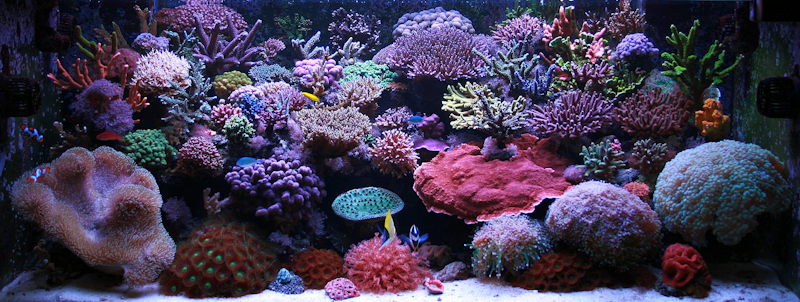 |
Introduction and Background
Hello, my fellow hobbyists. My name is Yung-Ming. I have a rare illness called RAS, the “Reef Addiction Syndrome.” Some of my symptoms include: always smelling like the ocean, always wearing a short-sleeve shirt to have quick access into my tank, and always scouting for the best location for an aquarium when I’m at a friend’s house. Last year, my wife was just speechless when I got her a new tank for Christmas. Yes, I know I am sick, but I am happily sick.
Every hobbyist has his own story. I will make my long story short. I was born and raised in Taiwan, a beautiful island surrounded by ocean… but I was never aware of what lies in the ocean. I moved to Northern California in 2003. One day my wife and I were shopping at a local pet store and were mesmerized by a reef display tank. It was love at first sight, and from then on our lives were never the same. My birthday was coming up, so my wife decided to give me a 46-gallon tank. When we placed the live rock in the system that evening, we spent the rest of the night just staring at the tank. In a few months, I upgraded my tank to a 125-gallon soft coral tank, and then to a 265-gallon hard coral tank a few years later.
At work, I often missed my tank. I eventually acquired a 120-gallon tank for my office at work. Then, in 2007, my family and I moved to another house. I had to take apart my 265-gallon home tank. After planning for 3 months, on February 2008 I moved my home corals to my office and upgraded my office tank to a 200-gallon tank. I was fortunate that most of the corals from both tanks survived and grew well in the new system.
In my seven years of reefkeeping, I have made hundreds of mistakes and have been through five major tank crashes. There is a big learning curve when starting this hobby, and I’m still learning as each day goes by.
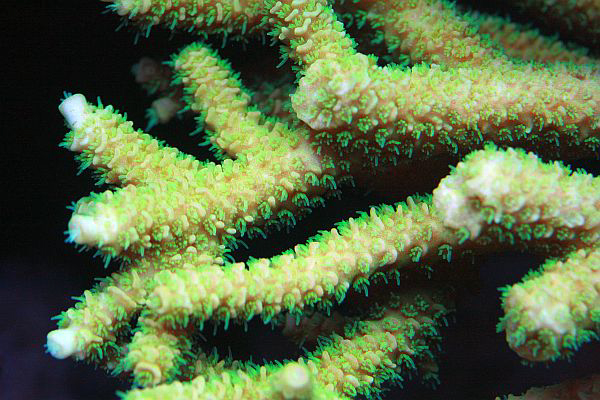 |
The Current System
My current main tank is 200 gallons and sits on a powder-coated metal stand. Its dimensions are 60” long, 30” wide, and 25.75” deep. It is composed of ¾” thick low-iron glass, with euro-bracing and two internal corner overflow boxes. The glass sump is also custom made, 60” by 20” by 16”, and is directly under the main tank. It has three compartments: the protein skimmer and filtering equipment on the left, the return pump in the center and the biological filtration area (refugium) on the right. There is also a 20-gallon acrylic propagation tank that is connected to the main system.
 |
This in-wall tank is located in my office waiting area. The front of the tank faces the waiting room and the back opens up into a 10' x 14' room where I hide all the plumbing and equipment.
 |
The Ultra Low Nurtrient System (ULNS)
The biggest challenge for me in reefkeeping is color. In order to bring out the best color of the corals, I have experimented with many different setup styles, equipment and additives. I eventually realized that it is difficult to make all the corals happy in one environment.
Last September, I almost had another major tank crash. I lost all of my fish in an overnight power outage. For the next few weeks with no fish and no feeding, I was forced to run the tank as an “ultra low nutrient system.” During this time I noticed a dramatic color change in the corals. Many of the corals exhibited incredible pure and brilliant color that I had never seen before. This brilliant color faded after I added new fishes, and fed the corals with “fish poo.” This inspired me to push the coral color to another level with the tank run on a “true” ULNS. On December 2009, I modified my system setup and switched to a full Zeovit method, a system which is known to create and maintain the water at very low nutrient levels.
It’s been six months since I’ve been running the Zeovit method. Many visitors have told me the corals' color looks brighter than before. But, after witnessing that “pure and brilliant” color previously, I know my system has not reached the “true” ULNS yet. The tank is still in an “early stage” of transformation.
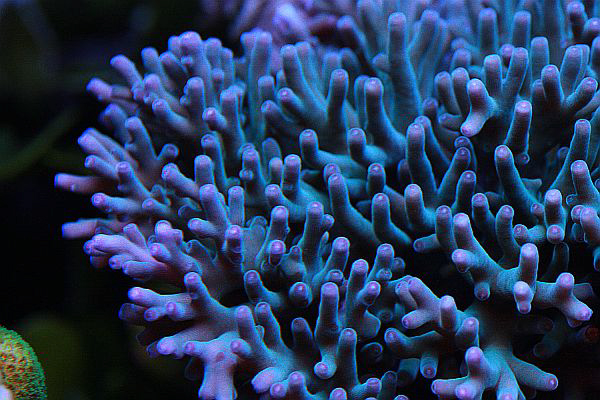 |
System Profile
• Display tank: In-wall 200-gallon (60" x 30" x 25.75") with euro-bracing and two internal overflows made by Aquarium Master
• Sump: Custom-made glass sump, ~40 gallon volume - 60" x 20" x 16"
• Skimmer: Deltec Turbo-Skimmer 1060 / H & S 200
• Controller: Neptune System Apex
• Chiller: Arctica Titanium Chiller 1/3 HP
• Heater: Hydor 300-watt and Ebo-Jager 250-watt
• RO/DI: The Filter Guys 75 GPD 5 Stage Ocean Reef RO/DI
• Dosing Pump: Litermeter III dosing pump
• Auto top-off: Litermeter III water exchange module pump for auto top-off. The evaporated water goes through a Reef Octopus Kalk Master filled with magnesium chloride and magnesium sulfate mix.
• Reactors: two Phosban reactors with RowaPhos
• Lighting: ATI Powermodule fixture with ten 54-watt T5 HO
• Zeovit reactor: Captive Ocean in-sump Zeovit reactor
• Water circulation: Two Vortex MP40s and two Vortex MP20s; Return: Reeflo Dart
Filtration
The majority of my equipment is a combination of two previous systems. I used the Deltec Turbo Skimmer 1060 in the first year. The skimmer handled the system easily, and kept the water parameters in check. But in this hobby, you always have to expect the unexpected. The needle wheel propeller in the skimmer pump broke one day, and I was not able to get the replacement part immediately. Luckily, I had a left-over backup protein skimmer in my garage with a similar pump design, an H & S 200, and I fitted the part in right away. The H & S 200 skimmer got the job done nicely for another year. Eventually, I placed the Deltec TS 1060 skimmer back into the sump.
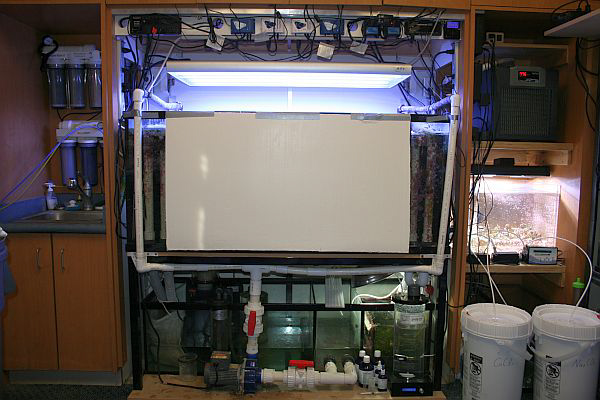 |
I use the Deltec FR509 reactor with the RowaPhos media to control the phosphate level. A small 20-gallon refugium is also incorporated at the right side of the sump to reduce the system's nutrient level. Now that I am running Zeovit, the entire system needs to be slowly weaned off the phosphate reactor and the refugium. A 100 micron filter sock is placed at the overflow's drain outlets before water enters the sump. In the back chambers of the Deltec TS1060 skimmer, there is an activated carbon filter bag and Polyfilter pad to remove the hazardous elements.
Biological filtration is as important as mechanical and chemical filtration in a closed aquarium system. The main tank has over 250 pounds of live rock and one inch of shallow sand bed transferred from previous tanks. I have a number of sponges which I believe are a separate source of biological filtration in my system. Underneath most of my live rock in the main tank and in the refugium are sponges that help in polishing the water.
Lighting
I started my tank with two 400-watt Reeflux 10K metal halide bulbs in Lumen Bright reflectors, powered by Coralvue electronic ballast. This lighting combination seemed to inject the growth hormone into a new tank. I could see several stony corals popping out new growing tips everyday. Many of my corals grew from a small fragment into a good-sized colony in a short period of time under this lighting setup. I was struggling, however, with the heat and a high electricity bill living in California’s Central Valley.
After seven months, I decided to walk into the dark side by replacing the metal halides with an ATI powermodule fixture with ten 54-watt T5 HO bulbs. In just a few days, the new T5 lighting woke up the corals' polyps. A variety of vivid colors reflected nicely under the wide range spectrum combination of T5 lamps. The PAR readings of my T5 lighting can be found here.
 |
|
T5 Lamp Combination:
|
|
Photoperiod:
|
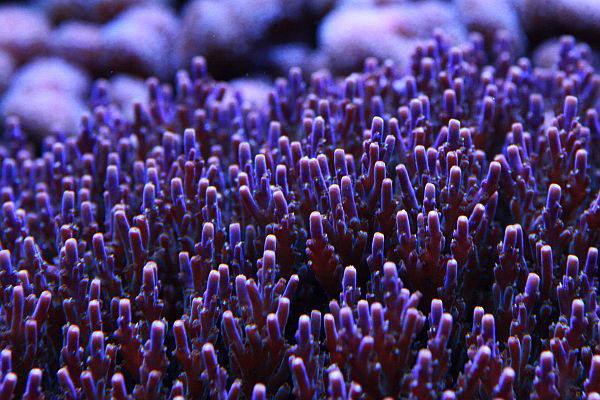 |
Water Circulation and Flow
I use a Reeflo Dart external pump with two ¾ inch returns at both front corners as the main return pump. Two Vortex MP 40s and two MP 20s are installed at both side glasses for wave motion in pulsing mode. Finally, two Icecap backup batteries are connected to the MP20s.
Temperature Control
The water temperature ranges from 76-78° F in winter, and 78-80° F in summer. It is controlled by a 1/3 HP Arctica Titanium Chiller, and a Hydor 300-watt and Ebo-Jager 250-watt heaters through a Neptune Apex controller.
|
Water Parameters:
|
Supplements
Calcium chloride and sodium bicarbonate two-part dosing is controlled by a Litermeter III dosing pump at the rate of 260ml per day. Evaporated water is replenished with reverse osmosis water through a Reef Octopus Kalk Master filled with a magnesium chloride and magnesium sulfate mix.
Many of my tank crashes were caused by automatic top-off device failures and malfunctions. To prevent this nightmare from happening again, I set up my own “multiple insurance policies” on the automatic top-off system. First, I chose the Litermeter water exchange module with level control as the auto top-off pump and siliconed the sensor suction cup to the glass. Second, the pump is controlled by the Litermeter III dialed to produce a maximum of 8 litters of top-off water per day. Third, a Neptune Apex controller will shut off the Litermeter III if the pH reading is out of the pre-set range. Fourth, my cell phone will receive a text message immediately if the Litermeter III has been turned off. Even with this setup, I still will not take a vacation of more than a week.
 |
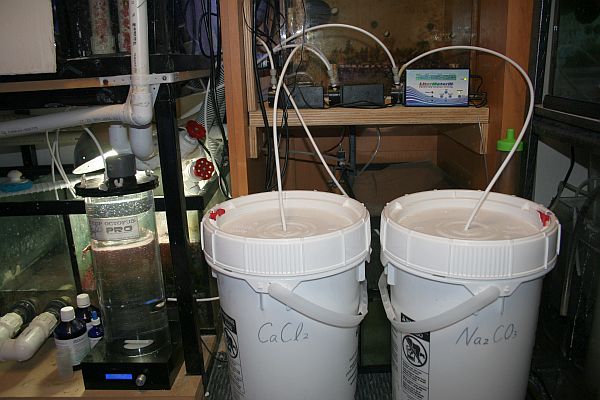 |
To reduce stress on the corals when converting from my old established system to the new Zeovit system, the dosing was done slowly:
|
Dosing Schedule:
|
Feeding
I feed the fishes once a day with one handful of dry pellets (mixture of Ocean Nutrition Formula One, Formula Two and Sera Granumarin). I feed the corals with Oyster-feast and Roti-feast twice per week.
Maintenance
Cleaning the glass, testing water parameters, washing filter socks and the skimmer's collection cup, replacing activated carbon and new lamps, calibrating probes - there is always something to be done everyday. I am very religious in performing routine water changes. I think a 10% water change every week in the past two years has been critical to the success of my tank.
Fortunately, most of the corals grow very fast in my tank, but an overstocked tank will also cause problems. So, like gardening, I spend a lot of time trimming the over-sized colonies and re-doing the “coral landscaping” to make my coral garden look more peaceful and harmonious.
Livestock
The main tank has about 80 different corals. Approximately 90% of them are hard stony corals. I used to pursue corals that were “limited edition," but ended up with a “greenish-purple” tank. Now, I look into my tank first and see what color coral will complement and enhance the existing coral garden. As a result, my coral collection is a wide variety of corals in an array of colors.
About 150 assorted hermit crabs, snails, crabs, and 20 Peppermint shrimp were added to the system as clean-up crews when the tank was started. There are two sunken starfishes to clean the sand bed.
|
Fish:
|
 |
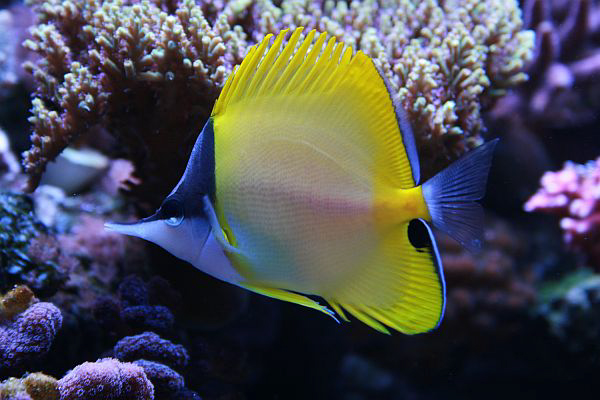 |
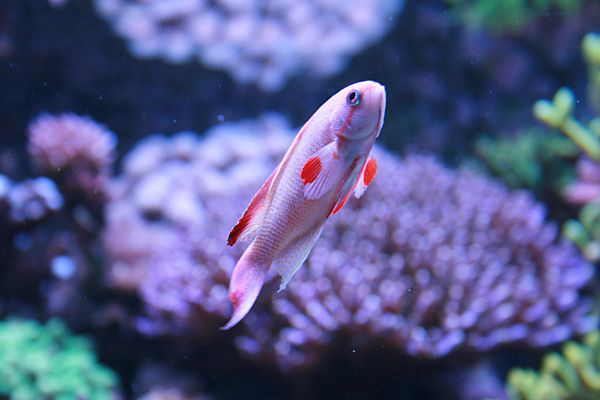 |
SPS Corals
|
Acropora:
|
Montipora
|
Other:
|
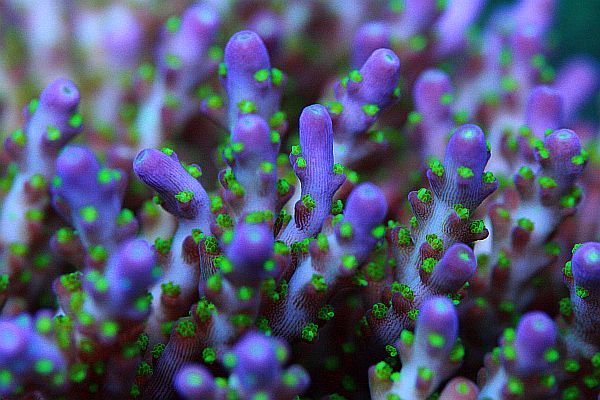 |
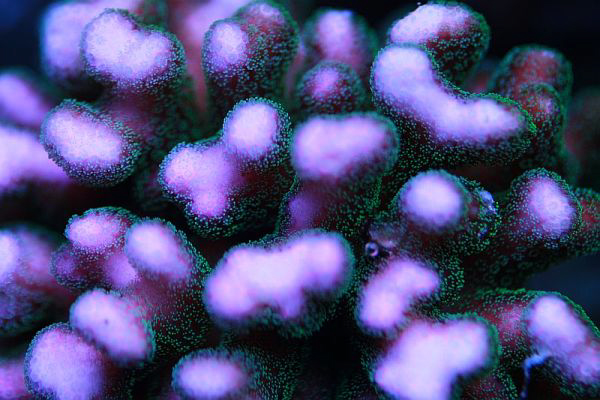 |
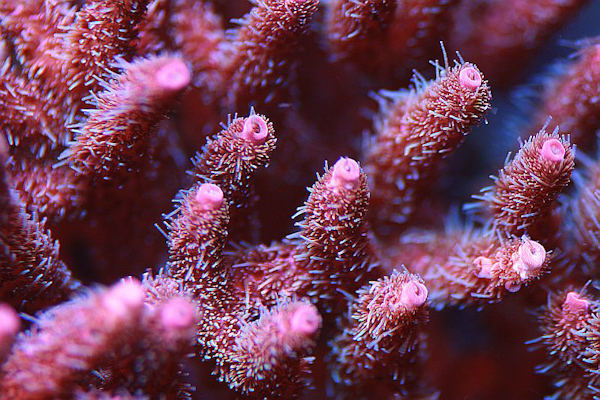 |
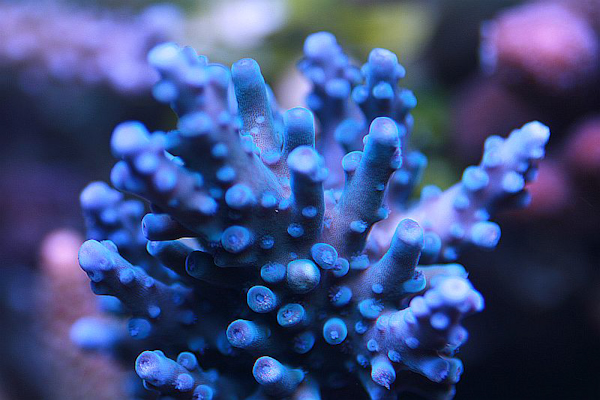 |
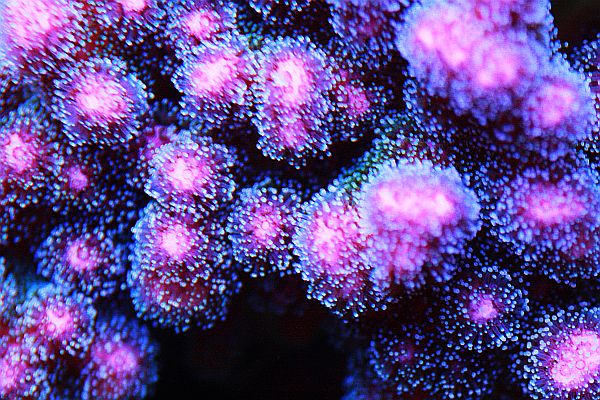 |
LPS and Soft Corals
|
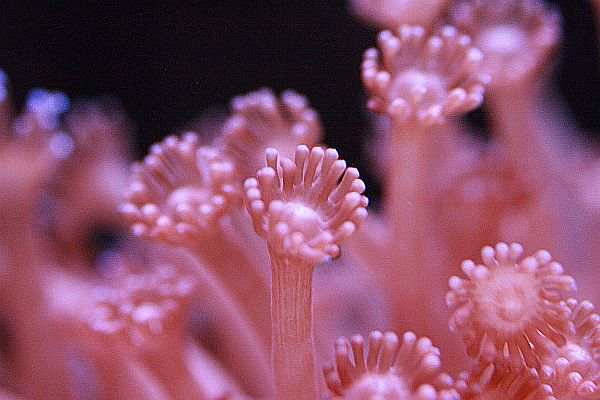 |
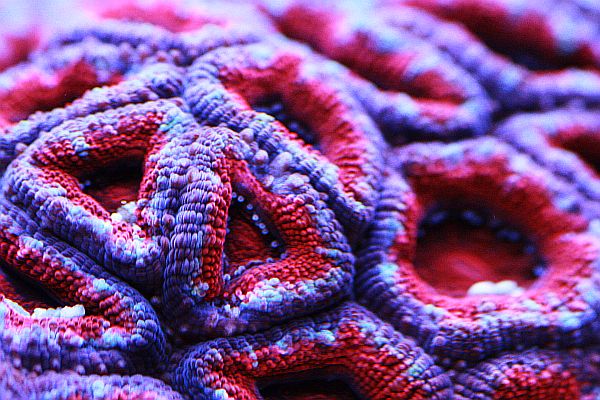 |
Acknowledgements
First, I thank the Reef Central online community and Team RC for recognizing my reef tank with this great honor. Without all the precious information and inspiration from Reef Central, my tank would not be what it is today. I would also like to thank my wife, Linda, and my daughters, Kalisa and Katelyn, for tolerating an obsessed husband/father with his incurable addiction. Till now, my wife has not given up on the idea of starting a Reef Central forum called “Aquarium Widow’s Club.” Also, my special thanks to Abe, Dan, Garret, Shannon, Minh, Peter and the fellow hobbyists of Central Valley Reef Club, who provide advice and share my passion for reefkeeping.
 |
Feel free to comment or ask questions about my tank in the Tank of the Month thread on Reef Central.



